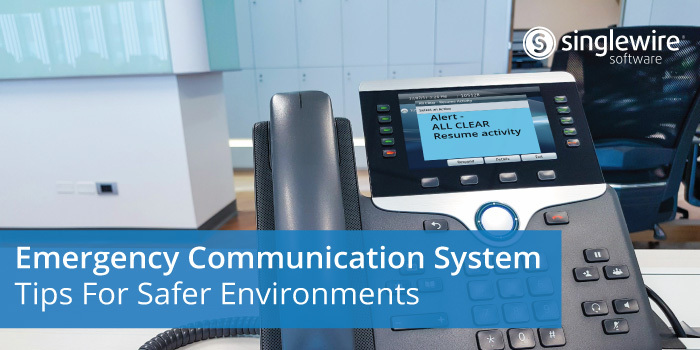Safeguarding Lives with an Emergency Communication System
With the ever-evolving safety landscapes of the world, the need for an advanced emergency communication system has never been more critical. Creating safer environments involves not only having a plan for every scenario but also ensuring that communication during emergencies is clear, timely, and effective. In this post, we will share essential tips for implementing an emergency communication system that can enhance the safety of your organization. We will highlight the importance of having a well-thought-out plan that considers delivery methods and incorporates real-time response mechanisms.
Have a Plan for Every Scenario
A comprehensive emergency communication system begins with a well-defined plan that covers a spectrum of potential scenarios. From an active shooter situation and severe weather events to medical emergencies, lockdowns, and evacuations, your plan should be thorough and adaptable. Consider the unique challenges each scenario poses and develop strategies to address them. For instance, in the case of an active shooter, the communication strategy might involve providing clear instructions for lockdown procedures and the location of safe zones.
Example: Active Shooter
- Message: “Lockdown in effect. Proceed to designated safe zones immediately. Do not open doors for anyone.”
- Delivery: Automated alerts through mobile devices, desktop notifications, and loudspeaker systems.
- Response: Employees can respond to mobile messages to indicate if they need assistance.
Pre-write Clear, Actionable Messages
During an emergency, every second counts. To minimize confusion and stress, pre-write clear and actionable messages. Having these messages ready ensures there is no need for individuals to think on the fly, maintaining consistency across all communication channels. Clarity is key to guiding people through critical moments and ensuring that everyone receives the same information.
Example: Severe Weather
- Message: “Severe weather approaching. Seek shelter immediately. Move to designated safe areas away from windows.”
- Delivery: Automated alerts through mobile devices, digital signage, and desktop notifications.
- Response: Employees can use the designated app to confirm their location.
Know How Messages Will Be Delivered
The effectiveness of your emergency communication system relies on the seamless integration of various delivery methods. Consider integrating phones, mobile devices, speakers, digital signage, and desktops into your system. Diversifying delivery channels ensures that important messages reach everyone, regardless of their location or preferred mode of communication.
Example: Medical Emergency
- Message: “Medical emergency in progress. Clear the area and wait for further instructions.”
- Delivery: Automated alerts through loudspeaker systems, mobile devices, and desktop notifications simultaneously.
- Response: Employees can use an emergency communication system to report any relevant information.
Give People an Opportunity to Respond
Real-time insights during emergencies are crucial for managing the situation effectively. Implement a system that allows individuals to respond, providing valuable information about their status and needs. This can include the roll call or rostering capabilities to enable organizations to identify who needs help and who is safe.
Example: Evacuation
- Message: “Evacuation in progress. Proceed to exit points calmly and swiftly.”
- Delivery: Automated alerts through mobile devices and loudspeaker systems.
- Response: Employees can use the designated response platform to indicate when they have safely evacuated or are still inside.
Leverage Virtual Collaboration
In the midst of an unfolding emergency, staying informed and making real-time decisions is paramount. Virtual collaboration tools can facilitate communication among key stakeholders, allowing them to share updates, coordinate responses, and determine the best course of action as events unfold.
Example: Crisis Situation
- Message: “A crisis situation has occurred, please join the designated virtual collaboration space to assist with the response”. .”
- Delivery: Automated alerts through mobile devices and desktop notifications.
- Response: Security personnel can join a virtual collaboration platform via a link to share real-time information and coordinate responses with other stakeholders.
Give the All Clear with an Emergency Communication System
Once the danger has passed, it is crucial to communicate the all-clear signal. This message reassures individuals that it is safe to resume normal operations. Clear communication at this stage prevents unnecessary panic and confusion.
Example: All Clear Message
- Message: “Emergency situation resolved. Resume normal operations and remain vigilant.”
- Delivery: Automated alerts through all communication channels used during the emergency.
- Response: Employees can acknowledge the all-clear message, providing an additional layer of confirmation.
Implementing an effective emergency communication system involves meticulous planning, clear messaging, diverse delivery methods, real-time response capabilities, virtual collaboration, and the assurance of the all-clear signal. By incorporating these tips and considering the unique needs of your organization, you can create a safer environment for everyone. Prioritize the safety and well-being of your employees by investing in a robust emergency communication system tailored to your specific requirements.
For more information on implementing an emergency communication system, explore our InformaCast solution.
